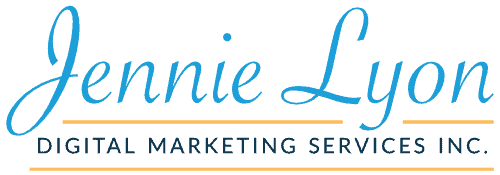Can I Start A Membership With A Small Audience?
Starting a membership program can seem daunting. Especially when your audience size is small.
You might ask, “Can I start a membership with a small audience?”
The answer is a resounding yes.
A small audience can be a powerful asset. It allows for a more personal connection. It fosters a sense of community.
This blog will guide you through the process. It will provide actionable insights on leveraging a small audience for membership growth. Let’s get started!
Understanding the Power of a Small Audience
Defining Your Value Proposition
Creating Exclusive Content for Members
Leveraging Social Proof to Attract Members
Email Marketing: Converting Subscribers to Members
Building a Community Around Your Membership
Membership Tiers: Catering to Different Audience Segments
Member Retention: Keeping Your Audience Engaged
Utilizing Feedback# to Improve Your Membership Program
Personalization: The Key to Connecting with Your Small Audience
Case Studies: Success Stories of Small Audience Memberships
Setting Realistic Membership Growth Goals
SEO and Content Marketing for Membership Attraction
Starting Small and Scaling Up
Understanding the Power of a Small Audience
A small audience is not a limitation. It’s an opportunity. With a small audience, you can build deeper relationships, engage with your audience on a more personal level, understand their needs, interests, and pain points, and tailor your content and offerings to meet these needs.
This understanding is crucial. It forms the foundation of your membership program.
Here are some key benefits of a small audience:
- Personal Connection: You can interact with your audience members individually. This fosters a sense of community and belonging.
- Feedback and Improvement: You can gather feedback more effectively with a smaller group. This allows you to improve and tailor your offerings.
- Loyalty and Advocacy: A small, engaged audience is likelier to become loyal members. They can become advocates for your brand, attracting more members.
- Focused Content: Understanding your audience allows you to create relevant content. This increases the perceived value of your membership.
- Higher Conversion Rates: A small, engaged audience is more likely to convert into paying members.
Remember, every successful membership program started small. It’s about quality, not quantity. Your small audience is a goldmine of potential members. It’s about understanding them, engaging them, and providing value.
Defining Your Value Proposition
Your value proposition is the core of your membership program. It’s the reason people want to join. It’s not just about what you offer; it’s about how you offer it and solve your audience’s problems. Your value proposition should be unique and set you apart from similar offerings.
Here are some questions to help you define your value proposition:
- What problem does your membership solve? Understand the pain points of your audience. Your membership should provide a solution.
- How does your membership solve this problem? Be clear about the methods or strategies you use.
- Why should someone choose your membership over others? Highlight what makes your membership unique.
Your value proposition should be clear and concise. It should communicate the benefits of your membership, and resonate with your audience. You want them to think, “This is exactly what I need.” Your value proposition is not static. It can evolve as your audience grows and their needs change.
Remember, a strong value proposition is the first step toward a successful membership program. It attracts your audience and converts them into members.
Creating Exclusive Content for Members
Creating exclusive content is a powerful strategy for attracting members. It’s about offering something valuable that can’t be found elsewhere. Your content should be tailored to your audience’s needs and interests and provide solutions to their problems.
Here are some ideas for exclusive content:
- In-depth guides or tutorials can provide detailed information on a specific topic and help your audience achieve a particular goal.
- Webinars or live Q&A sessions can provide real-time interaction and learning and help build community.
- Access to a private community or forum: This can provide a platform for members to connect, share ideas, and foster a sense of belonging.
- Discounts or early access to new products or services can provide tangible benefits to your members and enhance the value of their membership.
Remember, the key to creating exclusive content is to understand your audience. Know what they want and need. Your content should be high-quality and valuable. It should make your audience feel that your membership is worth the investment.
Leveraging Social Proof to Attract Members
Social proof is a powerful tool in attracting members. It’s about showing that others trust and value your membership. Testimonials and reviews are a great form of social proof. They show that real people have benefited from your membership. You can showcase these testimonials on your website. You can also share them on your social media platforms.
Case studies are another form of social proof. They provide detailed examples of how your membership has helped others. You can share these case studies on your blog or newsletter. You can also use them in your marketing materials.
Remember, the key to leveraging social proof is authenticity. Your testimonials and case studies should be authentic.
Email Marketing: Converting Subscribers to Members
Email marketing is a powerful tool for converting subscribers into members. It allows you to nurture your relationship with your audience. The first step is to build an email list. You can do this by offering a free resource or incentive in exchange for email addresses. Once you have an email list, you can start sending regular newsletters. These newsletters should provide valuable content to your audience.
Here are some tips for effective email marketing:
- Personalize your emails. Use your subscriber’s name and tailor the content to their interests.
- Provide value. Your emails should offer useful information or resources.
- Include a clear call to action. This could be an invitation to join your membership or a link to learn more.
- Test and optimize. Use A/B testing to find out what works best for your audience.
Remember, the goal of email marketing is not just to sell. It’s to build a relationship with your audience.
Building a Community Around Your Membership
Building a community around your membership is crucial. It fosters a sense of belonging among your members. A strong community can also help retain members. People are more likely to stay if they feel connected to others.
Here are some strategies for building a community:
- Create a private forum or group for your members. This can be a place for them to connect and share ideas.
- Encourage interaction. Ask questions, start discussions, and encourage members to interact with each other.
- Highlight member achievements. This can make members feel valued and appreciated.
- Organize virtual or in-person events. This can help strengthen the sense of community.
Remember, building a community takes time. It doesn’t happen overnight, but the effort is worth it. A strong community can help your membership thrive.
Membership Tiers: Catering to Different Audience Segments
Offering different membership tiers can be a smart move. It allows you to cater to different segments of your audience. For instance, you might have a basic tier for casual followers. This could include access to some content and a monthly newsletter. Then, you could have a premium tier for more engaged members. This could offer benefits like exclusive content, discounts, or early access to new products.
You could even have a VIP tier for your most loyal members. This could offer personalized services, one-on-one consultations, or access to exclusive events.
Remember, the key is to offer value at each tier. Each level should offer benefits that justify the cost.
Member Retention: Keeping Your Audience Engaged
Member retention is a crucial aspect of any membership program. It’s not enough to attract new members; you must keep them engaged.
One way to do this is by consistently delivering value. This could be through exclusive content, member-only events, or personalized services. Another strategy is to foster a sense of community. Encourage members to interact with each other, share their experiences, and contribute to discussions.
Here are a few more strategies to boost member retention:
- Regularly communicate with your members. Email updates, social media posts, or a member-only forum could do this.
- Recognize and reward your loyal members. This could be through a loyalty program, member spotlight features, or exclusive perks.
- Ask for feedback and act on it. Show your members that you value their opinions and are willing to improve based on their suggestions.
- Offer a seamless user experience. Ensure your membership site is easy to navigate and the sign-up and renewal processes are straightforward.
Utilizing Feedback to Improve Your Membership Program
Feedback is a powerful tool for improving your membership program. It provides insights into what your members like, what they don’t, and what they want more of. One way to gather feedback is through surveys. You can send these out periodically or after specific events or changes in your program.
Another method is to encourage open communication. Create channels where members can voice their thoughts and suggestions. This could be a forum, a comment section, or a dedicated email address.
Acting on feedback is just as important as collecting it. Show your members that you value their input by implementing their suggestions where possible.
Remember, not all feedback will be positive. It’s important to handle criticism gracefully and use it as an opportunity to improve.
Personalization: The Key to Connecting with Your Small Audience
Personalization is a powerful way to connect with your small audience. It makes your members feel seen, heard, and valued. One way to personalize your membership program is through tailored content. This could be based on a member’s interests, past behavior, or demographic information. Another method is through personalized communication. This could be as simple as addressing members by their names in emails. Or, it could involve more complex segmentation strategies.
Personalization can also extend to the member experience. This could involve customizing the user interface or offering personalized recommendations.
Remember, personalization should be based on data. Collect and analyze your members’ data to inform your personalization strategies.
Case Studies: Success Stories of Small Audience Memberships
Many examples of successful membership programs started with a small audience. Let’s look at a few case studies. The first is a small fitness studio that started a membership program. They had a small but loyal customer base. They decided to offer a membership program with exclusive classes and discounts. The studio focused on understanding their audience’s needs. They used this information to create a value proposition that resonated with their audience. The result was a successful membership program that continues to grow.
The second case study is a content creator who started a membership program. Because their blog had a small but engaged audience, they offered a membership program with exclusive content and community access.
The creator focused on creating high-quality, exclusive content and built a strong community around their membership program. This resulted in a successful membership program with high member retention.
These case studies show that starting a successful membership program with a small audience is possible. The key is understanding your audience, offering value, and building a strong community.
Setting Realistic Membership Growth Goals
Setting realistic goals is crucial when starting a membership program. It helps you stay focused and measure your progress. Start by defining what success looks like for your membership program. This could be a certain number of members, a level of engagement, or a revenue target. Ensure your goals are specific, measurable, achievable, relevant, and time-bound (SMART).

FREE RESOURCE: Smart Goals Template
Next, break down your overall goal into smaller, more manageable goals. For example, if your goal is to reach 100 members annually, break it down to around 8-9 new monthly members. This makes your goal seem more achievable and allows you to track your progress regularly.
Remember, growth often takes time. Don’t be discouraged if you don’t see immediate results. Instead, focus on consistently providing value to your members and building strong relationships with them. It’s also important to regularly review and adjust your goals. As your membership program grows and evolves, your goals may need to change, too. Regularly reviewing your goals lets you stay aligned with your membership program’s direction and make necessary adjustments.
In the next section, we’ll discuss how to use SEO and content marketing to attract new members to your membership program.
SEO and Content Marketing for Membership Attraction
Search Engine Optimization (SEO) and content marketing are powerful tools for attracting new members. They can help you reach a wider audience and convert them into members. Start by optimizing your website and membership page for search engines. Use relevant keywords in your content, meta descriptions, and alt tags. Make sure your website is mobile-friendly and has a fast loading speed. These factors can significantly impact your search engine rankings.

FREE RESOURCE: Small Business SEO Checklist
Conversely, content marketing involves creating and sharing valuable content to attract and engage your audience. This could be blog posts, videos, podcasts, infographics, or social media posts. The key is to provide value to your audience and position yourself as an expert in your field.
Here are some tips for effective content marketing:
- Consistently produce high-quality content that your audience finds valuable.
- Use a variety of content formats to cater to different learning styles and preferences.
- Promote your content on your social media channels and email newsletters.
- Encourage your audience to share your content with their networks.
- Include a strong call to action in your content to encourage sign-ups.
Remember, SEO and content marketing are long-term strategies. It may take some time before you start seeing results. But with consistency and quality, they can significantly boost your membership growth.
Starting Small and Scaling Up
Starting a membership program with a small audience may seem daunting. However, as discussed throughout this guide, it’s possible and advantageous in many ways.
A small audience allows you to build a strong foundation for your membership program. You can focus on understanding your audience’s needs, creating valuable content, and fostering community, which are crucial for its success and growth.
As your membership grows, you can start implementing more advanced strategies. These may include tiered memberships, partnerships, and advanced marketing techniques. Remember, the key is continually adapting and improving your program based on feedback and data.
Starting small also allows you to manage your resources effectively. You can focus on providing the best possible experience for your current members while gradually attracting new ones. This approach can lead to a sustainable and successful membership program.
Starting a membership program with a small audience is feasible and beneficial. You can turn your small audience into a thriving membership community with the right strategies and a customer-centric approach. So, start small, scale up, and watch your membership program grow. If you need help creating a membership or growing your existing membership, I’m here to help. jennielyon.com/chatwithjennie
Links for This Episode on starting a membership with a small audience.
- Content Calendar Template
https://jennielyon.com/contentcalendar - Discover Your Digital Marketing Success Path
https://jennielyon.com/quiz - How to Use our Digital Marketing Team
- Schedule a free call with Jennie today!
https://jennielyon.com/chatwithjennie - How to Use our Digital Marketing Team
https://jennielyon.com/vateam
Get in touch with Jennie:
🔹Free Consultation
https://jennielyon.com/chatwithjennie
🔹Jennielyon.com
🔹Social Media @jennielyonmarketing
Rate, review, and subscribe to Apple Podcasts.
If you like what you hear on the podcast, please consider rating and reviewing my show! Woo Hoo! Click here, scroll to the bottom, tap to rate with five stars, and select “Write a Review.” I would love to hear what episodes you enjoy the most!
If you still need to do so, please subscribe to the podcast. I’ll be adding new content weekly. If you’re not subscribed, you’ll likely miss out. Subscribe now!






















